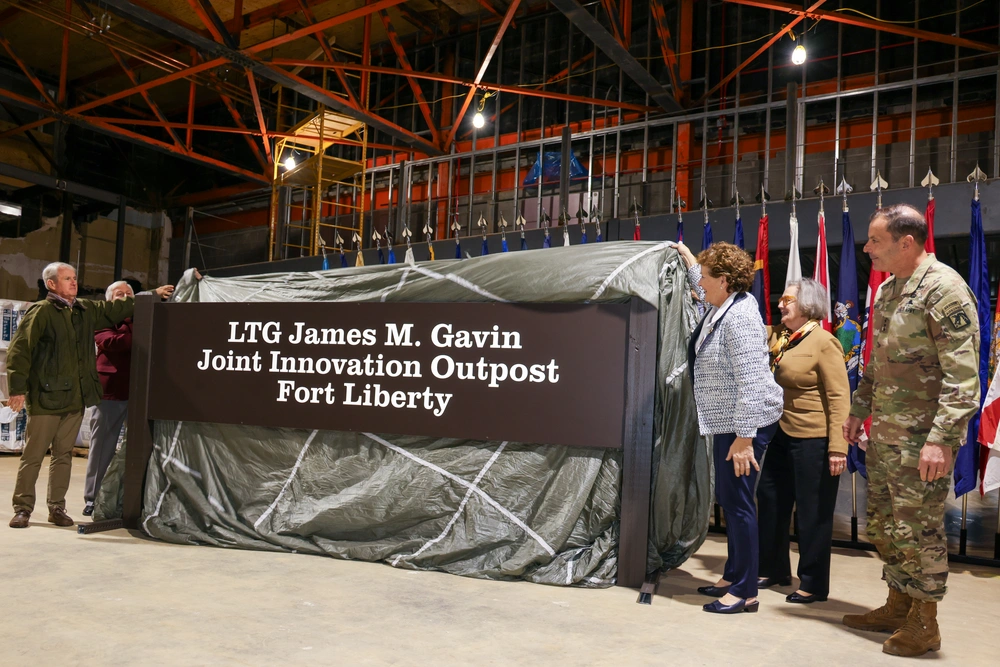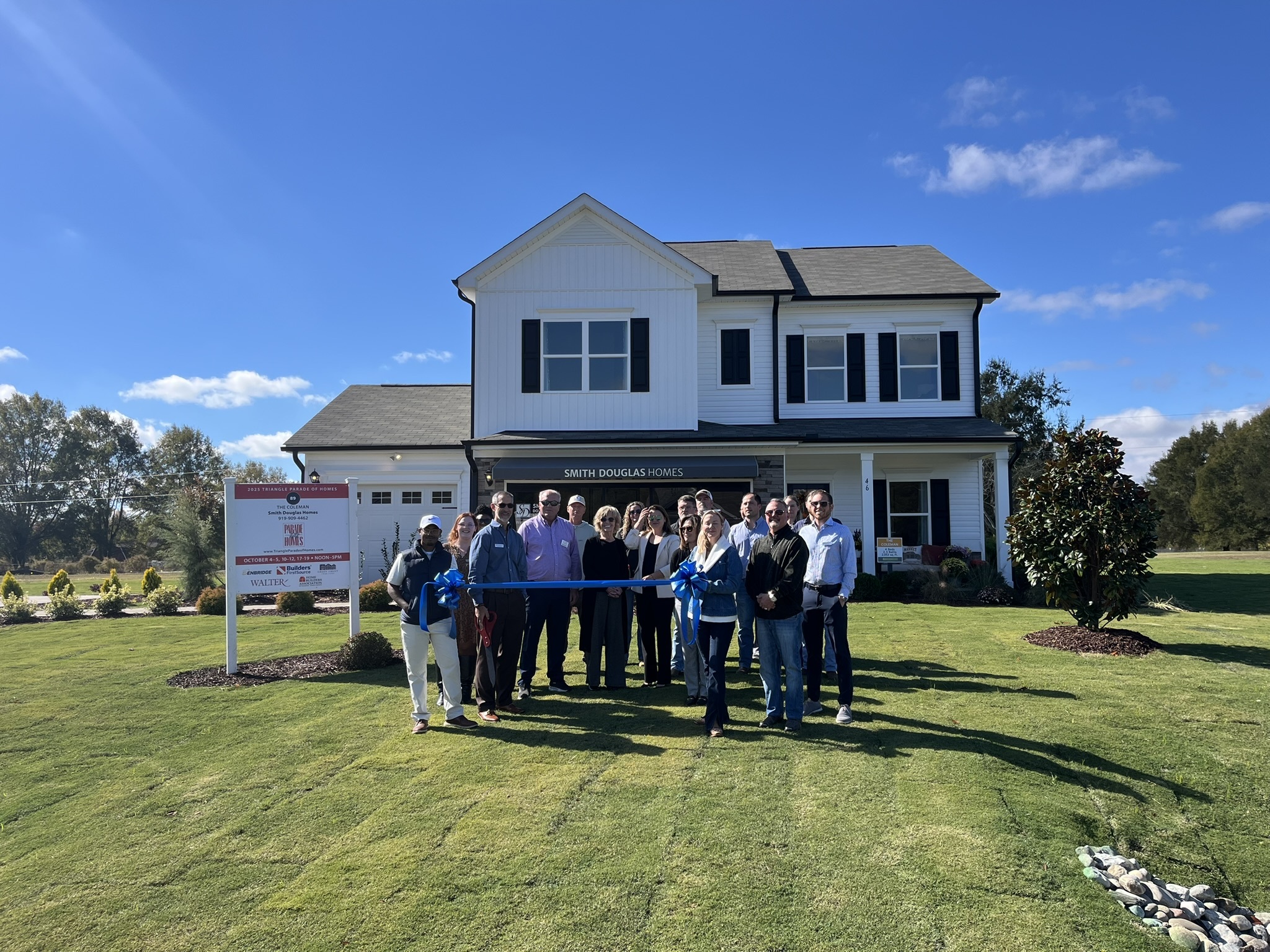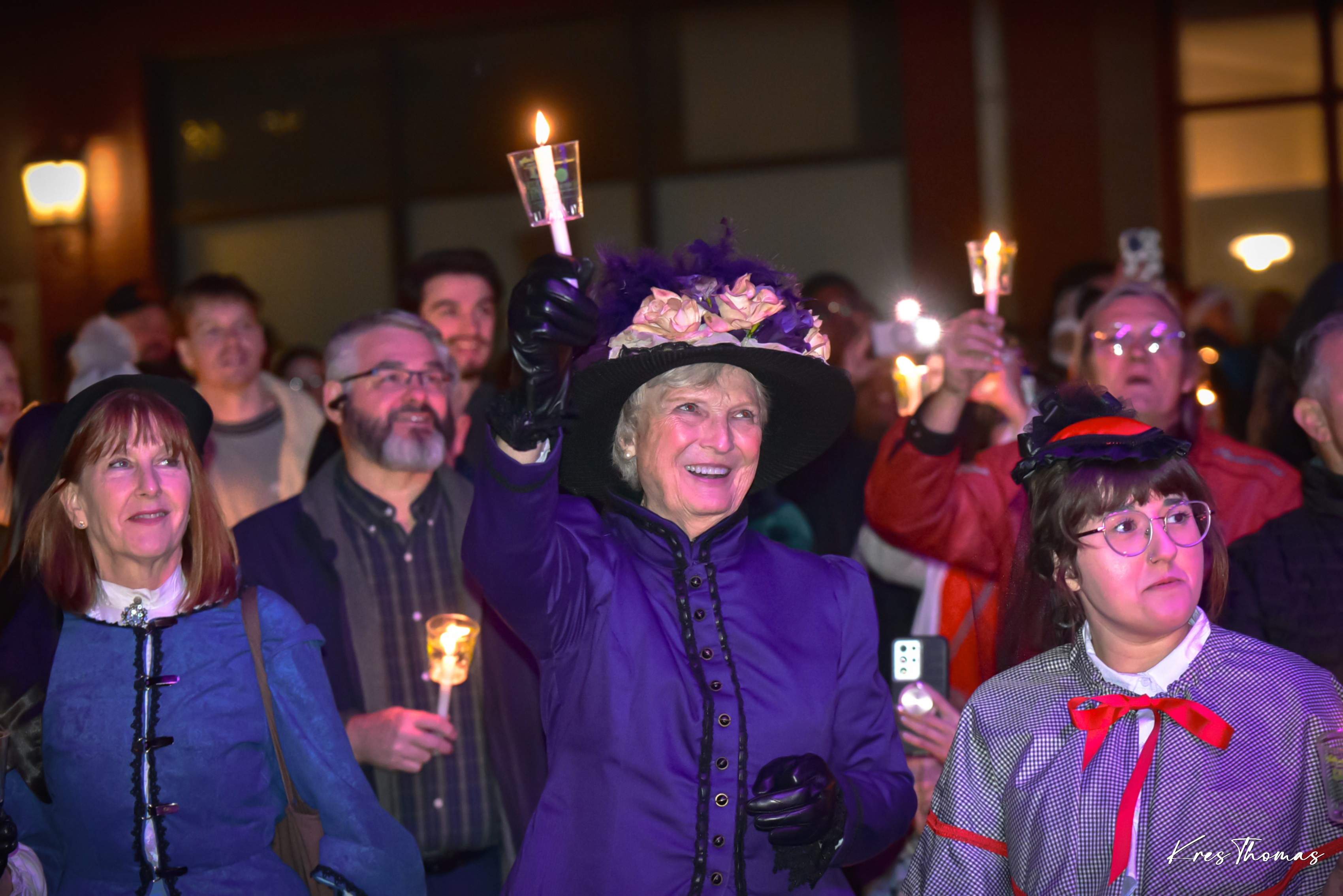
Last week Fort Liberty held a naming ceremony for the Lt. Gen. James M. Gavin Joint Innovation Outpost. This event celebrated not just a new facility but the enduring legacy of Lt. Gen. Gavin, a leader whose vision for innovation resonates deeply with the Army's mission today.
Army leaders, Soldiers, innovators and Gavin’s family gathered to honor his contributions while setting the stage for a future of cutting-edge capabilities. Gavin embodied the Army’s spirit of adaptation and excellence.
Chloe Gavin-Beatty, his daughter, shared during the ceremony, “My father was always asking, ‘How do we solve this problem? How can we do this better?’”
These words reflect his life’s work, from pioneering airborne warfare during WWII to advocating for advanced tactical systems as head of research and development. His foresight in utilizing helicopters for combat mobility predated their iconic use in Vietnam highlighting the kind of thinking that inspired this outpost.
The innovation outpost represents a leap forward for the Army. Capt. Robert Scalzo, senior software engineer for XVIII Airborne Corps, described the capabilities it offers as classified and unclassified spaces with unmatched flexibility.
“It’s not just about solving today’s problems but about building the infrastructure to tackle tomorrow’s challenges,” said Scalzo in a press release.
Purpose-built for adaptability, the space supports everything from warfighter exercises to large-scale technology conferences. Its proximity to key partners — including Defense Innovation Unit and local universities — removes barriers to collaboration, allowing ideas to flow freely and solutions to develop rapidly.
The outpost’s design reflects a clear vision: to empower teams across the Department of Defense, academia and industry. It serves as both a resource and a hub, enabling the Army to outthink and outpace adversaries. It is equipped with cutting-edge resources designed to foster creativity and solve problems in real time.
Inside its walls will be 3D printing labs, virtual reality simulation suites and prototyping workshops, all enabling Soldiers and engineers to take ideas from concept to reality. These tools are vital for pushing innovation forward, offering the Army the ability to address challenges head-on. One standout example comes from the 82nd Airborne Division’s Innovation Lab, which used 3D printing technology to design and produce custom radio mounts for their Infantry Squad Vehicles.
The dedication ceremony also showcased the outpost’s importance as a resource for Soldiers at every level. Lt. Gen. Christopher Donahue, commanding general of the XVIII Airborne Corps, emphasized the need for such facilities in an unpredictable world.
“You have to have a facility that can out-think, out-adapt, and out-anything your adversary does,” Donahue stated in a press release.
The outpost embodies this ethos, offering the tools and partnerships needed to remain at the forefront of military innovation. Beyond the technology and infrastructure, the outpost represents something more profound: a commitment to the Army’s people.
Editor’s note: Press release by: Sgt. Jacob Bradford.
The appearance of U.S. Department of Defense (DoD) visual information does not imply or constitute DoD endorsement.

Smith Douglas Homes has launched its notable development called Cape Overlook, a 63.95-acre subdivision situated on the Cape Fear River near Wildlife Road.

Walsingham Group Inc., an organization federally recognized for its efforts and emphasis on hiring Veterans is partnering with local and national organizations to recruit, hire and retain Veteran talent. Photo generated using Canva AI.Walsingham Grou

Costumed actors will roam the streets, carriage rides will guide visitors throughout and the traditional candlelight processional and illumination ceremony will be included at this year’s A Dickens Holiday. Photo provided by A Dickens Holiday, taken